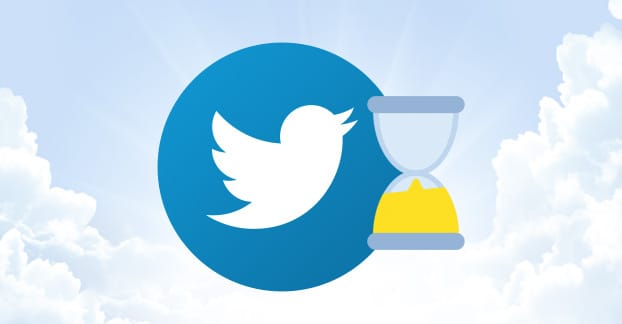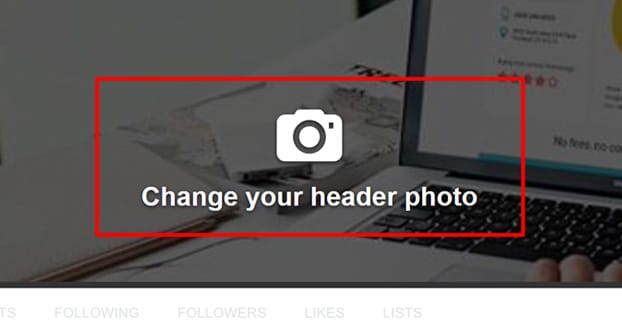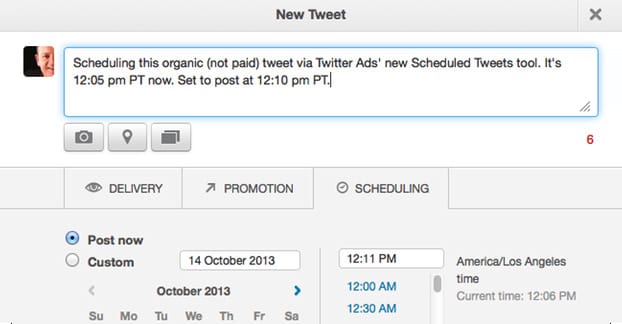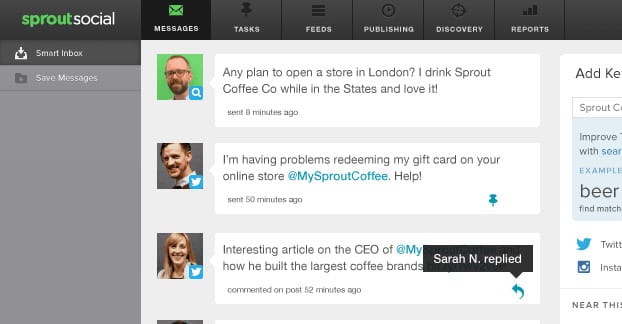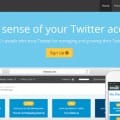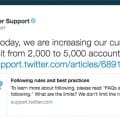Twitter doesn’t have to be a time-intensive platform. Plenty of power users limit their time specifically because it’s a time sink; if you get caught up in it, you can be stuck for hours per day. If you establish limits and good browsing habits, however, you can set yourself up for gradual success with an extremely limited time investment.
Before We Begin
Before we get into the steps, I have three caveats for you.
- You need to understand Twitter; the way it works and the way people use it.
- You have to have the groundwork laid for your eventual success.
- You can always invest more time to scale up your efforts and grow faster.
Points one and two I’ll discuss in greater detail to help you build that foundation. Point three is just for your information. As with just about any white hat technique for marketing, social or otherwise, it scales as much as you’re willing and able to put into it. The more time, money, and effort you put in, the better your returns will be. So, while you can effectively grow a Twitter profile in an hour each week, you can get even greater returns spending an hour a day. Just don’t go overboard and spend hours upon hours every day; you’ll see diminishing returns and work in other areas of your marketing is likely to suffer.
Understanding Twitter
Twitter doesn’t seem like an overly complex platform at first glance, but there’s actually a lot going on. When and how should you retweet a post? What can you do with lists? What’s up with hashtags? Between the mechanics of the site and the culture of the users, there’s a lot to learn.
Ideally, you will take some time to learn via experience and research. I’m hoping, with this guide, that you aren’t going to go into this completely new to the site. It’s hard to get real marketing going when you’re learning from scratch.
If you want to put various techniques into practice, I recommend starting a personal account, or even a parody or joke account, rather than experimenting with your business account. This serves two purposes. First, it means that if you do break a rule and suffer the consequences with suspension, you aren’t jeopardizing your business. Second, it means that you will be able to start fresh with your brand account and grow right away.
Of course, if you already have a brand Twitter that you’re managing, that’s fine too. You can use it for your experiments, so long as you’re not doing something that violates the Twitter rules.
I don’t have time or space here to write you a beginner’s guide to how Twitter works. Perhaps one day I will. Until then, here are some options you can read, shamelessly copied from recommendations from Neil Patel.
- Mashable’s Twitter Hub. This resource is a central hub for information about Twitter published on Mashable. Most of it is extremely basic, and some of it is out of date, but you should get the general idea. Just make sure to take the articles with a grain of salt – at least the ones that still exist.
- Moz’s Twitter Guide. This guide is chapter 7 of the greater Moz guide to all social media. It’s very stylish, with lots of information, lots of links, and a ton of great resources included. You can also skip back and read the first couple chapters, if you want a more general overview of the quality and value of social media in general.
- Copyblogger’s Ultimate Twitter Guide. This guide isn’t so much of a guide itself as it is a table of contents packed full of other resources. A lot of it isn’t even on Copyblogger itself. Consider it an ultimate table of contents or index for great Twitter-related content around the web, compiled over several years.
- Twitter’s Help Center. If you’re used to the absolute mess that is Facebook’s help center, or you just don’t expect to find help natively, it might come as a surprise to find that Twitter actually has a lot of great information on their site. It can take a little digging to find specific answers, but general information is all readily available.
Read one or more of these to get a good idea of what you need to know about Twitter in general. You can’t learn everything just by reading, of course, but you can get a good head start.
Laying the Groundwork
Once you have the information stored in your brain, you need to get to work setting up the perfect foundation.
If you already have an active Twitter account, you’ll be able to skip a lot of this.
- First, set up your account. The general recommendation is to use a nice readable brand name or personal name for your username, which is what will show up as the @name you use. Some people find their names taken and append TheReal or just Real in front of it. You can customize your display name later, whenever you like.
- Next, follow a few people. If you’re setting up a personal account, Twitter will try to import contacts and get you to follow some of your friends. They will also suggest businesses for you to follow. Do what you like. I recommend following a handful – maybe two dozen or so – people and entities you know and respect. A few friends and family, a few comparable businesses and business partners, and a few top-tier influencers gives you a nice rounded feed.
- Customize your settings. Make sure “protect my updates” is turned off; that hides your content from anyone who doesn’t follow you, which includes Google. I’m sure you know why that’s a bad idea. Change whatever other settings you like, up to and including turning off the filtered feed if you prefer to see things chronologically.
- Set up your profile. You will want to personalize your profile picture, either as a headshot if you’re a personal profile or a logo if you’re a brand. Set up your cover photo for something large and vibrant, which portrays what your account is about.
- Set up your profile information. Your bio, location, and website link all should be filled out here. For your bio, you want to be specific and honest about what you do. Avoid clichés and the over the top “I love X” when X is just a minor hobby or everyday item. Be real, be frank, and be concise.
- Make a few tweets. You don’t want to spam, you just want to establish the fact that your account is active and not just created to idle. This will help you gain followers.
With all of that in place, you have a foundation. Now it’s time to build upwards from what you have.
Growing in Minutes Daily
Now it’s time to start establishing good habits. Everything I’m listing here will be quick and easy to do in just a few minutes each day, so you should clock in under an hour each week. It might be a little longer some weeks than others, though. Sometimes you just want to get a bit more effort in.
First, take some time to be active. Specifically, make 2-3 tweets of your own. One of them can be sharing a link to something on your site. One of them should be something trending, which you can see in the trending sidebar on Twitter itself. One of them should be a little more casual. Make sure you’re using hashtags appropriately in your tweets, particularly the trend tweets. You can tweet more, but waiting some time between tweets is going to eat up a lot of your weekly hour.
You should also retweet a few things, likely interspersed within your organic tweets. I like between 2 and 5 retweets, depending on the content. Less serious tweets and industry jokes bump the number up, which deep, detailed articles drop it down.
Second, pick a few people to follow. There are a lot of different categories to choose from, and I’ll go over them in a second. First; how many people should you follow per day? Neil Patel recommends at least two. I say it doesn’t matter, because the more the merrier.
Every time you follow someone, that someone is notified. Ideally, they will see the notification, they will check out your profile, they will see something they like, and they will follow you back. Some people will follow you back automatically, but that’s not always a good idea. Some of them won’t follow you, but will pay attention and be more aware of you in the future, which makes them more likely to engage and follow you later.
- The “who to follow” tab on Twitter is a good resource for a small handful of accounts you can follow, but it’s not necessarily going to get you great accounts. It’s largely going to be made up of two types of accounts. The first is people who have interacted with you recently but who you do not already follow. I see people who retweet several of my posts in the list, for example. The other type are people who are common followers for other people you follow. The idea being that if everyone else likes this account, you will too. Pick one and follow them, and X out any you absolutely don’t want to follow but don’t want to block either.
- Identify the top few accounts you would consider the absolute industry leaders for your niche. Look at the people they follow. You can do this by clicking to their profile and clicking the “following” tab. Look through this list to find someone who looks good who you can follow. Most influencers don’t follow a ton of people, so you will have a pretty good choice.
- Look for people whom the influencers you follow retweet. If someone is posting valuable enough content that the people you consider authorities are sharing it, that person is probably good enough for you to follow.
- Look at the list of people who have followed you since the previous day. Some of those people will be spammers, which you can block and remove. Some of them will be valid but disinterested followers; you can go ahead and not follow them back. The same goes for any form of terrible follower. Some will be new followers you don’t follow but who post interesting content; these are the people you follow back.
Every now and then, you should prune out some of the people you follow. Any time you find yourself thinking “ugh, them again” when you see a tweet in your feed, ditch them. An individual unfollow isn’t going to put your account in jeopardy, and it won’t have a big effect on anything other than your feed.
So far, the tweets, retweets, and follows you’ve been doing shouldn’t take more than a few minutes. You should also take the time to organize the people you follow into lists. This will help you from getting overwhelmed with your native feed, which is going to happen when you’re following so many people. It’s up to you how you organize them; I like a list for influencers, a list for peers, a list for friends and family, and another list for specific people of interest. Monitor the lists rather than your primary feed for a more rounded experience.
What else can you do? Simply monitor your mentions. If someone replies or messages you, you’ll get a notification. Browse them and see if there’s something you should acknowledge. A bad comment can be ignored, a good but closed comment can be liked, and a good comment that invites discussion can get a reply. Beyond that, there’s not much else you should do. Everything else is about learning, experimentation, and expansion. If you want to grow your account with only an hour a week, this is the bare minimum to start growing and engaging your follower count.
